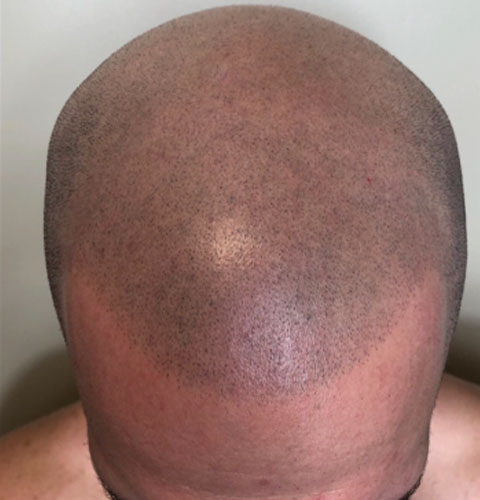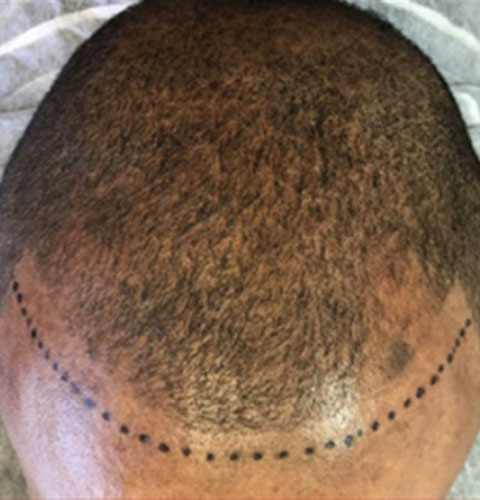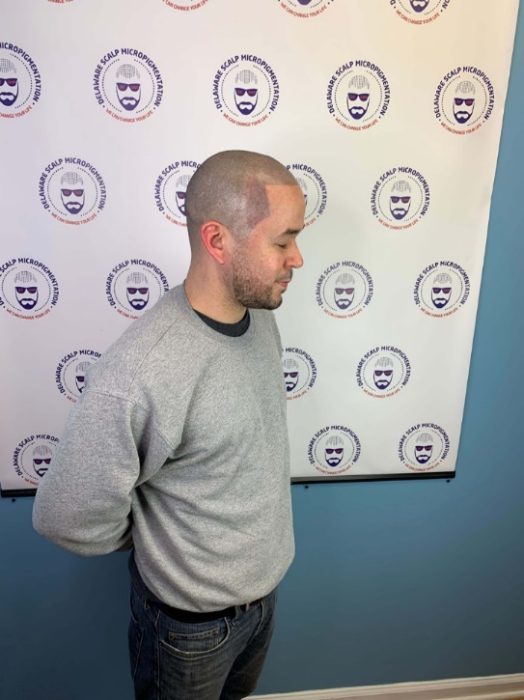If you’re reading this, there’s a high chance that you’ve opted for scalp micropigmentation hair treatment. Initially, you’ll feel a wave of mixed emotions, either a bit of fear of anything going wrong or the excitement of coming out with a new style that makes you look exceptional.
Familiarity breeds comfort. So if you’ve got a case of nerves, you can overcome it by doing your research about the procedure that awaits you.
Before going for such a life-changing procedure, people normally do a lot of research to form certain expectations about the process and the outcome. Here, we will discuss in detail how things will go about when you go for the first session of the SMP treatment, including the preliminary work that the technicians might perform on you to prep your scalp.
But before we delve into that, let’s clear up some misconceptions that you may have about the SMP procedure:
SMP Hair Treatment Does Not Grow Back Hair
While most people are already aware of this, it’s important to reiterate this point for those who may not know. No, SMP hair treatment will not plant any hair follicles or strands that will sprout hair.

The procedure involves using a microneedle to add pigment to the scalp, which gives the impression of hair. It covers up bald spots very effectively to give you the illusion of hair.
SMP Hair Treatment Doesn’t Hurt a Lot
There’s a bit of discomfort during the scalp micropigmentation process, especially after the procedure is finished. But the process doesn’t hurt the way getting a tattoo does. Experts will apply numbing topical over your scalp, which can lessen the pain during the process, allowing for a better finish.
Initial Discussion
Your first consultation will be with the micropigmentation specialist, where they can assess the entire situation, and you can share your questions and concerns with them. In case you have a condition that doesn’t make you fit for SMP hair treatment or are going through a phase where it may not be fit for you, the specialist will inform you. Conditions such as breakouts or acne on the scalp may require the procedure to be delayed.
Afterward, you can explain your goals and the look you wish to achieve to them.
Hairline Mock-up and Preparation
One of the first steps is to decide whether your natural hairline is sufficient enough to be retained or if it requires some modification. The common procedure is to use some wax pencils to mark the scalp with an outline for the new hairline placement. You and the specialist can work together to decide on a look that you’re happy with.

The SMP hair specialist will assess and discuss certain considerations with you, such as the pigment color and the density, before the process begins. If you have any blemishes or scars around the scalp where the micropigmentation may occur, the specialist will inform you how they plan to go about covering them during the procedure.
The First Micropigmentation Session
The SMP hair specialist will set up the machine for the procedure. A pigment that fits your natural hair color will be made ready ahead of the process. You simply have to relax as the SMP specialist begins to apply the first pigment layer. This is where they lay most of the groundwork, such as setting up the natural hairline or adding to the existing one.
The first session is often the lengthiest, lasting anywhere from 2 to 4 hours. Luckily, you’ll be given breaks during the process, so you don’t have to worry about not having food or not getting bathroom breaks.
After Your First Scalp Micropigmentation Session
DAY 1 – 4:
After the treatment, there will be a natural urge to touch your head. As previously stated, there isn’t a lot of pain involved in the procedure, but there’s a bit of discomfort that will make you feel like touching your head. You must resist any temptation to do so, as the pigments start to settle during this phase. There will be multiple scabs on your scalp that must not be disturbed.
Apart from touching the scalp, you should avoid all forms of moisture. No swimming, taking a shower, or any physical exercise that can cause the scalp to sweat profusely.
DAY 5 -7:
There will be some scabs on the scalp at this point in the healing phase, but the rest of it will have healed by now. You can take showers, using only cold water over your head. There’s a risk of exfoliation due to the hot water, which may cause the scabs and the pigments to emerge from the surface.
For people who have some hair on their head and wish to shave, it’s recommended to avoid those parts where the SMP treatment has been performed, as there’s the off-chance that you could pull out some scabs.

DAY 7 and onward:
At this point, most of the scabs on your head will have healed, and the pigments settled in. The restrictions previously applied will no longer be applicable, and you can go about your routine without the fear of ruining the pigment.
After the 14th day, your specialist will call you in again for 2 to 3 more sessions depending upon the amount of work required on your scalp.
Delaware Scalp Micropigmentation provides hair micropigmentation for men and women to give them back their lost confidence and self-esteem by providing them with a new look. If you happen to be in Wilmington, DE, and require SMP treatment for hair loss, reach out to us for an appointment today!

